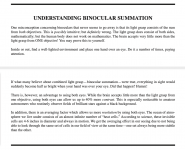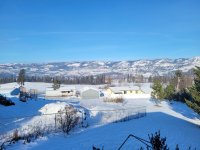Comparing binoculars to a spotting scope..
I am contemplating two binoculars, either 12x50 or 15x56 and putting it on tripod.
I also have a 8x42 to go with them for hand held views.
I can't remember where I read this, but using both your eyes, you get a multiplier effect on objective size and amount of light...
Does this also work on magnification? I´m just talking compared to a spotting scope.
Would a 15x56 compete with a fixed 30x 65-70mm scope? Or something else?
What would a 12x50 compete against?
I am contemplating two binoculars, either 12x50 or 15x56 and putting it on tripod.
I also have a 8x42 to go with them for hand held views.
I can't remember where I read this, but using both your eyes, you get a multiplier effect on objective size and amount of light...
Does this also work on magnification? I´m just talking compared to a spotting scope.
Would a 15x56 compete with a fixed 30x 65-70mm scope? Or something else?
What would a 12x50 compete against?








